 [1]
[1]Former torture and detention centre Londres 38 on September 11, 2013. Photo by user Hi Sashi on Flickr, under a Creative Commons license (CC BY-NC-ND 2.0)
In the blog Memory in Latin America [2], Lillie Langtry has published a series of posts about “places of memory” in Chile's capital, Santiago: buildings or sites related to the military coup d'état [3] that overthrew socialist president Salvador Allende [4] on September 11, 1973, and the 17-year dictatorship led by Augusto Pinochet [5]. This year, 2013, marked 40 years [6] since the coup.
1. Museum of Memory and Human Rights
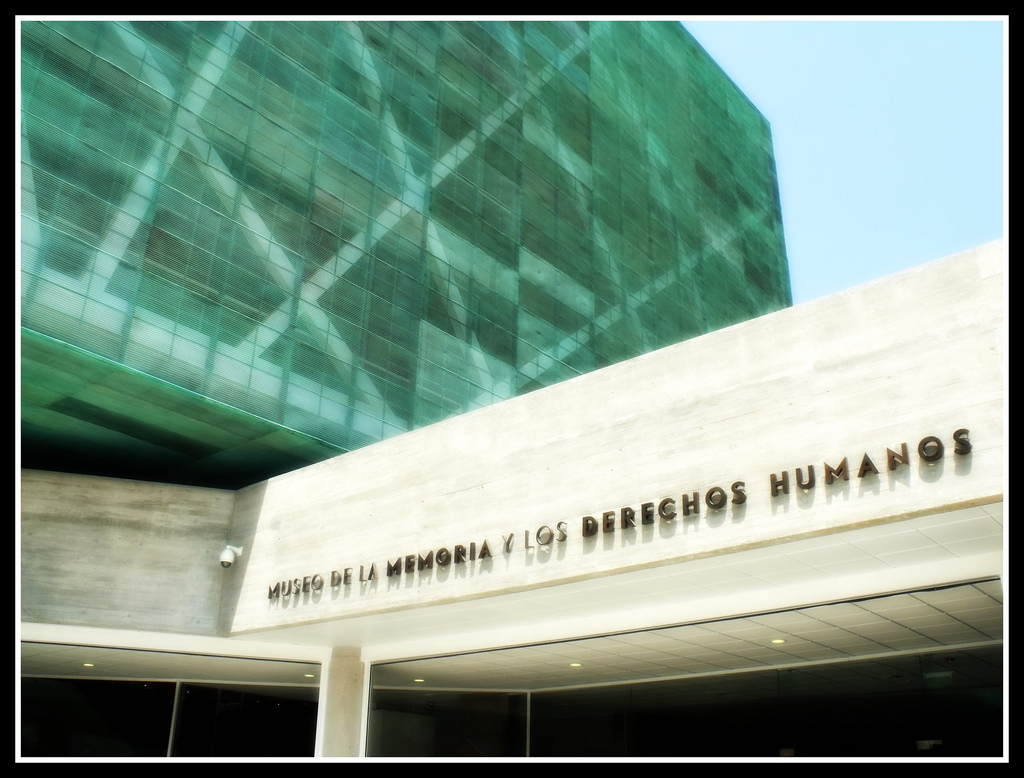 [7]
[7]Museum of Memory and Human Rights. Photo by Giovanni A. Pérez on Flickr, under a Creative Commons license (CC BY-NC 2.0)
This online tour starts with the Museum of Memory and Human Rights [8] [es], “a large and striking site”, as Lillie explains [9]:
Sadly you're not allowed to take photographs inside, which is a real shame, because the most striking feature for me is the huge wall of photographs of the disappeared reaching up across the entire space. There is also a point where you can stand and look out at it and locate individual names and faces.
On the ground floor various terminals show footage of the 1973 coup and its aftermath. As you move upstairs, different areas cover aspects like exiles and international solidarity, media coverage, and torture – including, chillingly, an electric shock device (made by General Electric – not suggesting they intended it to be used for that purpose!). There are also items made by prisoners and photographs of memorial sites throughout Chile.
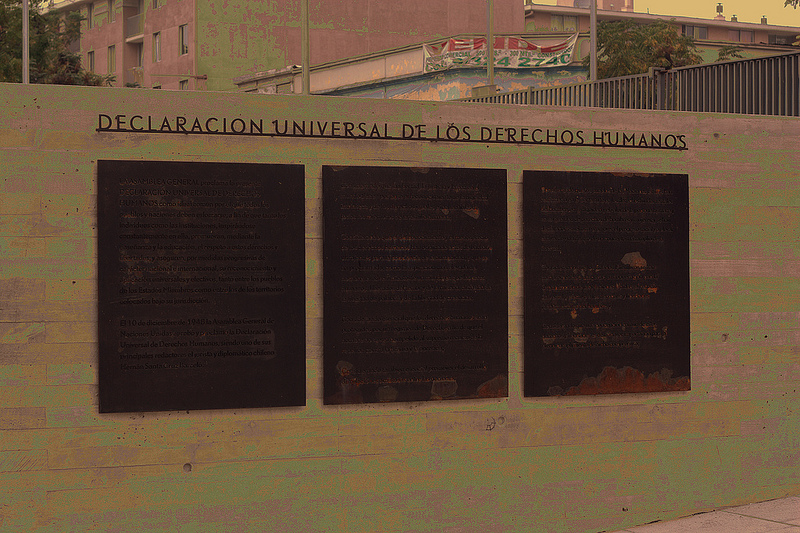 [10]
[10]Universal Declaration of Human Rights at the Museum of Memory and Human Rights, Chile. Photo by Jenn Dyer on Flickr, under a Creative Commons license (CC BY-ND 2.0)
Lillie also notes that, “[T]his is explicitly not a space where you will get some sort of pseudo-neutrality or weighing up of the pro- and anti-Pinochet factions as equal”, and she quotes the museum's catalogue:
“The task of building a memory must be guided by a moral compass; we must build a reading of the collective trauma that goes above and beyond what is evident, a history of victims and criminals, guilty and innocent. The goal in the museum's construction of memory is to become a space that assists the culture of human rights and democratic values in becoming the share ethical basis of our present and future coexistence. Only in this way can we empower our claim of NEVER AGAIN.”
You can see more photos of the museum (including some from the inside) on Flickr [11].
2. Londres 38
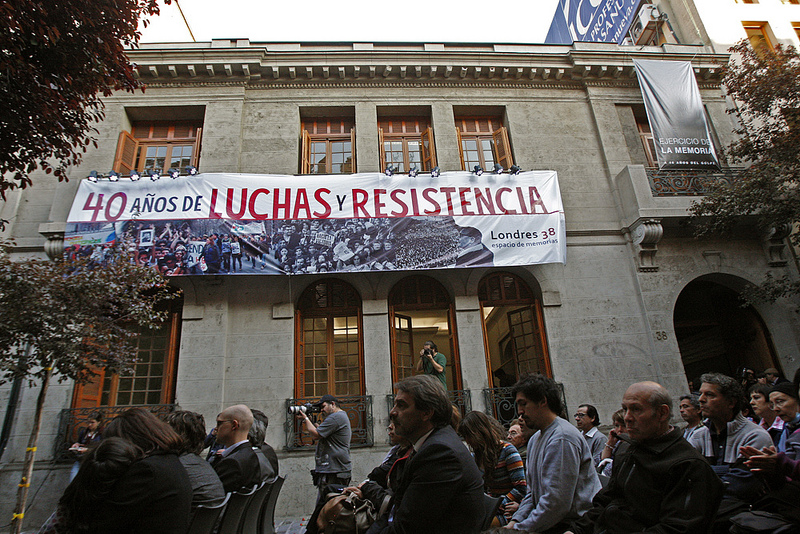 [12]
[12]“40 Years of Fighting and Resistance”: Londres 38, former torture and detention centre in Santiago, Chile. Photo by the Municipality of Santiago on Flickr, under a Creative Commons license (CC BY-NC-ND 2.0)
In another post, Lillie writes about a former detention and torture centre called Londres 38 [13]:
It was used by the DINA (secret police) as a torture and holding centre for regime opponents, at least 98 of whom died there or afterwards [14] [es]. In front of the building, victims’ names are embedded among the cobble stones (similar to the Stolperstein [15] in Germany).
She adds:
I was initially a little surprised at the condition of the walls, but of course it makes far more sense to see it like this than artificially spruced up. You certainly get more of a sense for the suffering that took place there; although it's also really amazing to think how central the location is. Ilovechile.cl writes that the building was known for the loud classical music coming from it – pretty chilling when you realise what that music was covering up.
 [16]
[16]Londres 38 on September 11, 2013. Photo by César Castillo on Flickr, under a Creative Commons license (CC BY-NC-ND 2.0)
3. La Moneda
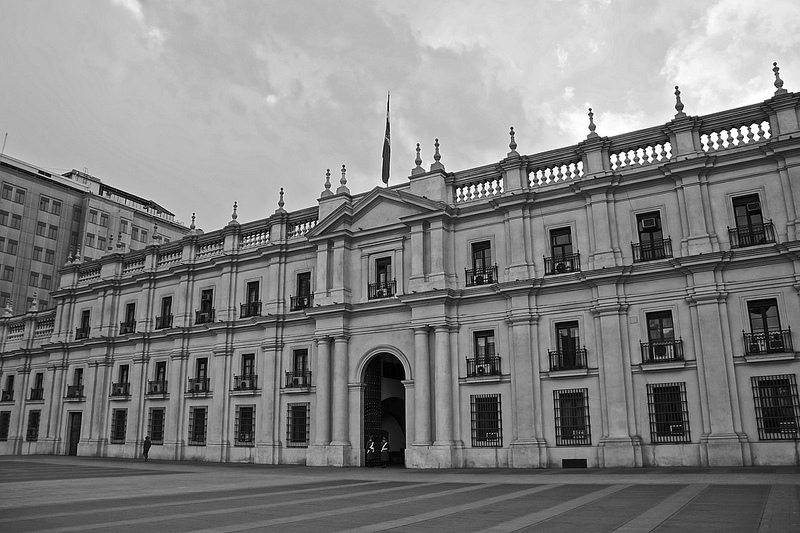 [17]
[17]La Moneda, Chile's presidential palace. Photo by user Alobos Life on Flickr, under a Creative Commons license (CC BY-NC-ND 2.0)
Lillie also includes a post about Chile's presidential palace [18], which was bombed [19] during the coup on September 11, 1973.
Francisco Vergara Perucich writes about the bombing in Democracities [20]:
This building, considered a symbol of national independence and republican tradition, a built expression of the social progression, was completely burned and destroyed by the own military forces that swore loyalty to the nation and its constitution. Imagine two F-16s bombing the White House, or two Typhoons bombing Buckingham Palace… A scene really hard to believe. This attack was a sign of the end of a republican and democratic era.
 [21]
[21]Forty years since the military coup. La Moneda. Photo by Hi Sashi on Flickr, under a Creative Commons license (CC BY-NC-ND 2.0)
4. Memorial for the Disappeared
 [22]
[22]Memorial for those detained, those who disappeared and those who were executed for political reasons. Photo by user Nuevasantiago on Flickr, under a Creative Commons license (CC BY-NC-SA 2.0)
In her last post in the series about places of memory in Santiago, Lillie mentions the Memorial for the Disappeared [23]: “a large, stone wall with a list of victims carved into it”.
She explains that the memorial is inside a cemetery:
I always really like seeing a memorial used, actually part of the fabric of life. In this case, at the bottom of the memorial are many notes, photos, little plaques, flowers, and so on. It's a sombre site but then, it is in a graveyard. The important thing is these victims did not previously have anywhere where their families could go to mourn them and to mark their lives, and now they do, and they are acknowledged in the chief cemetery of the capital city as being part of the country's history.
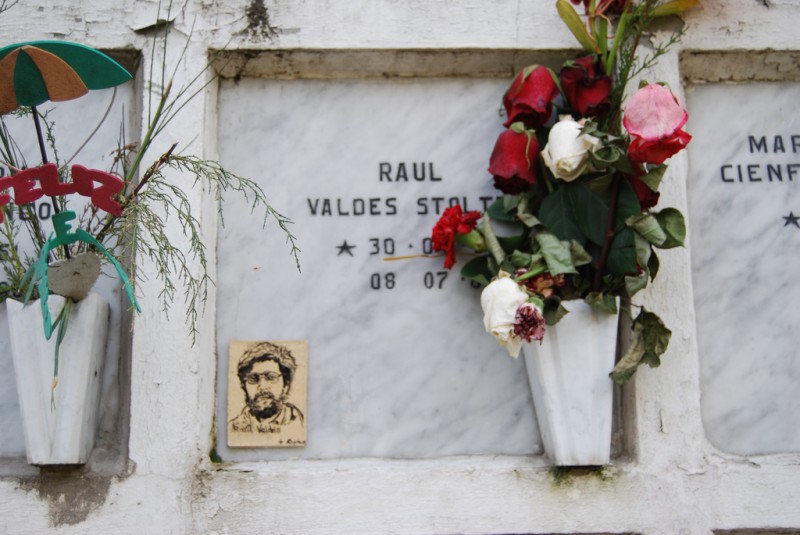 [24]
[24]Raúl Valdés Stoltze. Memorial for the Disappeared. Photo by Paul Lowry on Flickr, under a Creative Commons license (CC BY 2.0)
Visit Lilie's blog [2] for more posts about memory and human rights in Latin America. You can also follow her on Twitter: @Lillie_Langtry. [25]
5. The National Stadium
 [26]
[26]Chile's National Stadium. Photo from Wikimedia Commons, under a Creative Commons license (CC BY 2.0)
Finally, we'd like to add one more place of remembrance in Santiago, Chile: the National Stadium [27] (Estadio Nacional in Spanish), which was used as a detention and torture center.
As Pascale Bonnefoy [28] explains in Global Post, [29]“Estimates of the total number of prisoners range from 7,000 to 20,000, including about 1,000 women. […] Torture took place on the cycling track, in administrative offices, in corridors and on fields. There is no solid figure on how many people were killed or disappeared from the stadium.”
